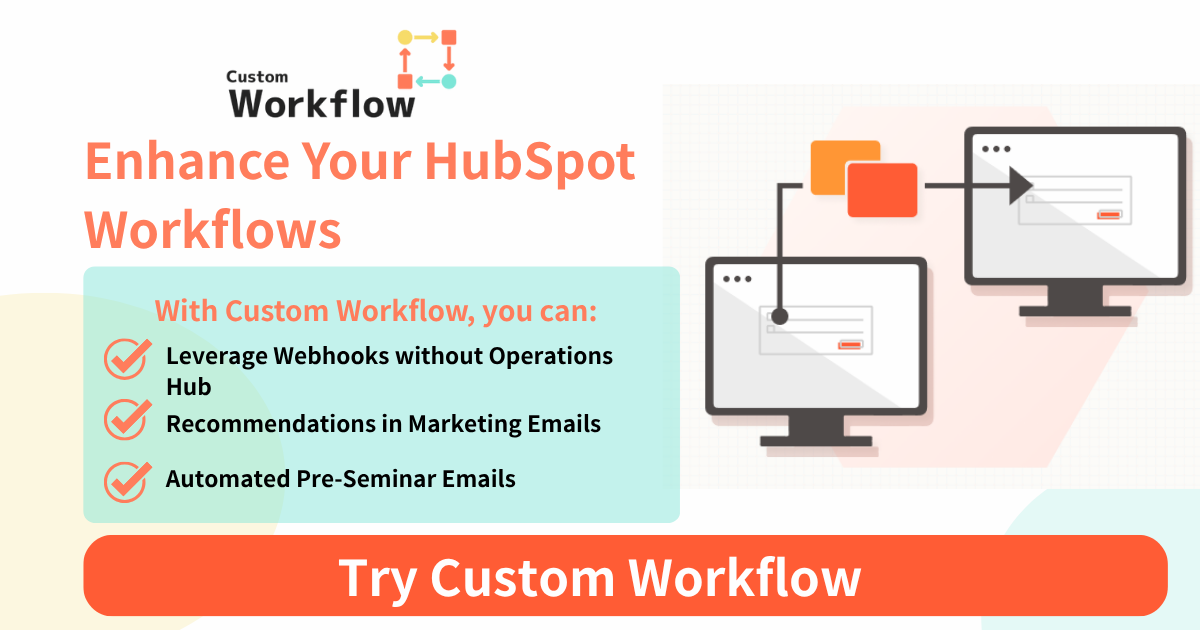How to Automatically Remove Associations from Specific Records in HubSpot Workflows (Using Custome Workflow Starter)
This article explains the purpose, use cases, and operational steps for the "Association Removal Action" feature, part of the third-party HubSpot app "Custome Workflow Starter."
Demo Video


Detail

Purpose
The primary purpose of this workflow action is to automatically remove (delete) the association between a record that meets the workflow's trigger criteria (e.g., a contact) and another specific record (e.g., a specific deal, company, or ticket) identified by its ID.
This feature is the counterpart to the "" covered in a previous article.
Use Cases
This feature is useful when you want to automatically disconnect records that are no longer needed, such as when a specific process is completed or a status changes.
- Project Completion: Automatically disassociate a contact from a management deal or ticket record once their task or project is complete.
- Cleaning Up Status Changes: When a contact's status changes to "Lost" or "Canceled," automatically remove the association from any related open deals.
- Data Cleansing: Automatically remove incorrectly associated records (e.g., old deals or duplicate companies) based on a specific trigger.
Setup and Execution Steps (As seen in the video)
The video shows the process of a workflow automatically removing an association between a contact (test) and a specific "Deal" record that is already associated with it.
Step 1: Check Data Before Execution
- Before the workflow runs, the record screen for the contact (
test) is checked. - In the right sidebar, the "Deals (1)" section is visible, showing that a deal named "test" with the ID
17996498290is currently associated.
Step 2: Check Workflow and Trigger
- Navigate to the workflow editor screen.
- The trigger (enrollment criteria) is set to activate when the "
Event Date" property value is changed.
Step 3: Add the Custom Action
- Click the "+" icon in the workflow to add a new action.
- From the action selection panel, choose "Custome Workflow Starter" from the "Integrated apps" section.
- From the list of custom actions that appears, select "Association Removal Action."
Step 4: Configure the Target for Removal
- The configuration screen for "Association Removal Action" opens.
- Target Object Type: Select the object type of the record you want to disassociate from. In the video,
Dealis selected. - Target Object ID: Specify the "Record ID" of the record you want to remove the association with. In the video, the target deal's ID,
17996498290, is entered directly. - After configuring, click "Save."
Step 5: Activate and Run the Workflow
- The "1. Association Removal Action" is added to the workflow.
- Activate the workflow (turning it from "OFF" to "ON").
- (Off-screen) The trigger condition ("Event Date" is updated) is met, and the workflow executes.
Step 6: Verify the Final Result
- Return to the contact record (
test) that was checked in Step 1 and reload the page. - After the page loads, the "Deals (1)" section on the right sidebar has disappeared.
- This confirms that the association between the contact and the "test" deal was successfully removed by the workflow.
Source Code
HTML
CSS
Javascript
FAQ
No, it is not a standard feature. The "Association Removal Action" explained in this article is a custom feature that becomes available by installing a third-party app called "Custome Workflow Starter" in HubSpot.But Other action is able to do it.
No, you cannot. The feature introduced in this article is designed to disassociate one specific record designated by its "Target Object ID" (e.g., a Deal with ID 17996498290). It is not a feature for disassociating all related records.
Step 4 in the article shows how to enter (hard-code) a specific, fixed ID (17996498290) as the target. If the target you want to disassociate changes dynamically (e.g., you want to disassociate a Deal ID stored in a contact's property), you would need to use a HubSpot "personalization token" to reference that property's value instead of entering a fixed value.
Search
Related Template
Need Customization?
We can customize this sample to match your specific business requirements.
Book Free ConsultationGot a quick dev request?
Put it on Trello!Need a fix for HubSpot, CMS, or GAS? Post it on Trello.
Development Requests Here



